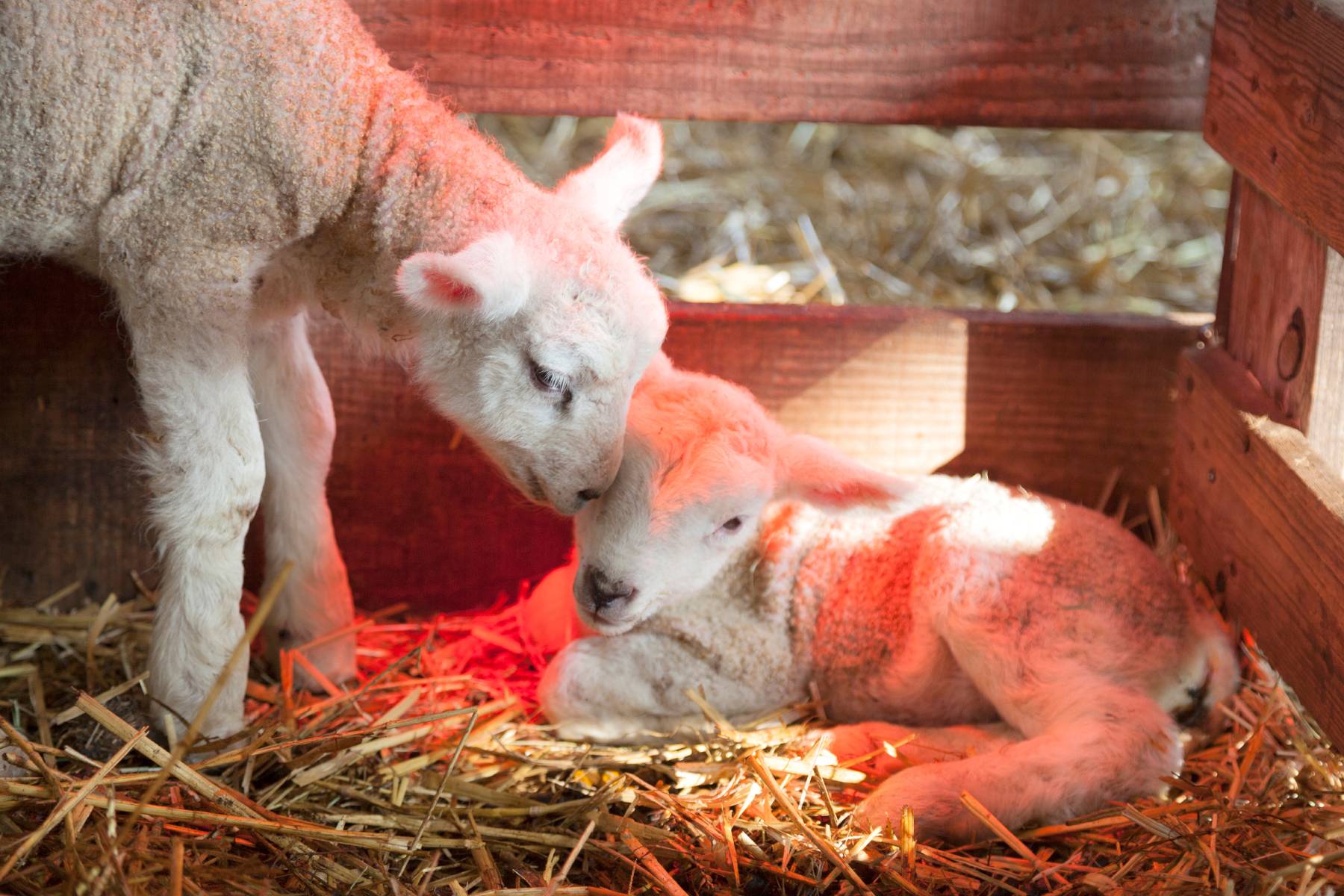Caring for lambs and goats in cold weather is essential to avoid common hypothermia in lambs and kids. Learn the symptoms of hypothermia and how to treat it in time.
Having a newborn lamb or goat kid get chilled and hypothermic is pretty common, especially when you live in a colder climate like we do. We generally plan our breedings so that the ewes and does are giving birth in April or later, but even in April and May we get below freezing at night and the newborn babies are at risk of hypothermia.
This year things are a bit different on our farm, and we had a ewe due in the middle of this bitter cold snap. To be sure we didn’t lose the lambs, we were checking on the ewe every 1-2 hours, day and night. She snuck the babies out between one-hour checks, and when we arrived one of the twins was hypothermic. Thankfully, we arrived in time, recognized the symptoms, and treated him right away.

Symptoms of Hypothermia in Lambs and Goat Kids
Treating Hypothermia in Lambs and Goat Kids
It is important to treat the lamb or kid as soon as possible once you realize it is hypothermic. The sooner you help it, the higher chance of survival.

First, get it wrapped in a towel and into a warm, indoor place. If it is wet, work to dry it and heat it at the same time. There are two ways to heat it, either on your lap or in a hot box. If you can go inside a warm indoor space, near a heat source, either method is fine. If you only have a barn or cold area to work in, you will need to use a hot box.
It is possible to heat it too fast, and it is also possible to get it too warm. So be cautious and aware of how it is doing as you work. You also need to be careful to not burn it.
Heating on Your Lap
If you can, take it inside a warm house or building, get near a heat source (woodstove, fireplace, or heater) and have it cuddled up in your lap in a towel, next to the heat source. Then, use a hair blow dryer to heat it and dry it by blowing back and forth over its body, keeping the dryer moving the whole time. Be sure that you always have one of your hands on the lamb or kid while you do this so you don’t burn it.

If the heat you are blowing on it is uncomfortable to your hand then it is too hot for the baby as well. Rub the lamb or kid with the towel and continue to blow dry it. Check its body temp with a rectal thermometer every 5 minutes or so. After it reaches a rectal temperature of 102.5 degrees F, stop heating it up.
Using a Hot Box
Take a cardboard box that is big enough to fit the lamb or kid in and cut a hole on each end of it, approximately 5 inches diameter. Place the chilled lamb or kid in the box on a towel and close the lid. Put a hair blow dryer in one hole and blow warm air into the box – not onto the lamb or kid, just into the box. Stick your arm in the other hole and put your hand on the baby, this it to be sure you don’t burn or over-heat it. If your arm is uncomfortably hot, so is the baby.
Sometimes it works best to turn the blower on and off repeatedly as needed to keep the box warm, but not too hot. Check its body temp with a rectal thermometer every 5 minutes or so. Once it reaches a rectal temperature of 102.5 degrees F, stop heating it up.

Once you have the baby back to normal body temperature, it is good to give it warm milk to help warm its insides. If you have ever had a cup of hot cocoa on a cold day, or iced tea on a hot day, you know how much what we put inside our body can affect our temperature and how warm or cold we feel. Don’t feed the lamb or kid while they are hypothermic because it may be too weak and can aspirate the milk.
It can also aspirate if it is having labored breathing. Wait to feed the baby until you have raised its body temperature up to normal. Then, you can bottle or syringe feed it some warm milk from its mother, or let it nurse, to give it another boost of warmth.

If hypothermia is the only problem the lamb or kid is having, then you will find that once you have raised its body temperature, and given it a warm meal, it will perk up substantially and be active again. Once it is completely dry, has a normal body temperature, and is being active and having normal behavior, it is ready to go back to its mother.
Hypothermia is deadly for baby lambs and goat kids. But if you can catch it early enough and treat it properly, you can save its life.
Kat Ludlam has been homesteading in Colorado for 15 years now. She and her husband, Daniel, are the owners of Willow Creek Farm, where they breed and raise specialty wool sheep, milk sheep, Nubian goats, chickens, Muscovy ducks, and crops that thrive in their location. They also own and run a custom fiber processing mill, Willow Creek Fiber Mill . Kat loves to feed her family from their land, and teach others to homestead as well.
All MOTHER EARTH NEWS community bloggers have agreed to follow our Blogging Guidelines, and they are responsible for the accuracy of their posts.
